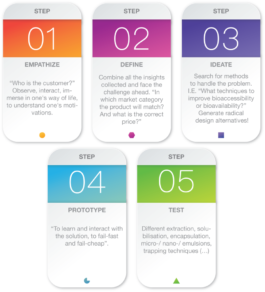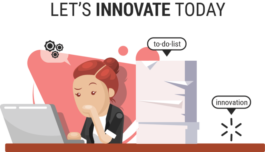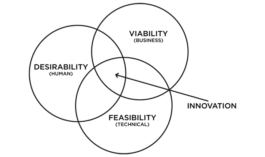Considering the potential of curiosity in skill acquisition, the development of interests, goal perseverance, and various positive subjective experiences, individual differences in curiosity can be expected originate new processes to drive our future innovation management and systems. Curious people want naturally to continually accumulate new abilities and experiences. Finally, while a human centered process, “design thinking approach” not means “forget the product-centered approach”. There is no incompatibility between design thinking, technical expertise, sustainability or company’s ethical and social values. It depends on integrating social and environmental values into the core of business strategies. With curiosity and perseverance to embrace a societal change we can generate great opportunities for make world better, build new markets and obtain long-term success innovative ideas.
Leila FALCAO, PhD – November 2018
Illustration « Curiosity-driven » : Image adaptée avec permission provenant de la fondation Nobel(c) (Nobel lecture of Laureate Theodor W. Hänsch, Stockholm.
Photo de couverture : by Andy Holmes
References
Agar, J. The curious history of curiosity-driven research. 21p. Downloaded from http://rsnr.royalsocietypublishing.org/ on November 9, 2018.
Anon, .1999. Efficient product introductions: the development of value-creating relationships. Ernst & Young global client consulting, ECR Europe and ACNielsen, 68 pLord, 2000.
Benner, M. The Chain Information Model: A Systematic Approach for Food Product Development. Ph.D. Thesis, Wageningen University, the Netherlands, 2005. ISBN: 90-8504-223-2.
Ernst, H. et al. Sales, Marketing, and Research-and-Development Cooperation Across New Product Development Stages: Implications for Succes. Journal of Marketing Vol. 74 (September 2010), 80–92
Fuller, G.W. (1994). New Food Product Development: from concept to market place. CRC, Boca Raton, 175 p.
Luning, P.A.; W.J. Marcelis and W.M.F. Jongen (2002). Food quality management: a technomanagerial approach. Wageningen Pers, Wageningen, 323 p.
Lord, J.B. New product failure and success. In: Brody, A.L. and J.B. Lord (Eds.). Developing new products for a changing market place. (pp. 55-86). Technomic, Lancaster, 2000.
Shapira, H.; Ketchie, A.; Nehe, M. The integration of Design Thinking and Strategic Sustainable Development. Journal of Cleaner Production, v. 140, p. 1, 2017.
Nielsen 2014. Nielsen cracks the DNA of ‘breakthrough innovation’ success, following study of 12,000 product launches across Europe
www.mintel.com
Myths About New Product Failure Rates ( https://newproductsuccess.org/white-papers/new-product-failure-rates-2013-jpim-30-pp-976-979/)












